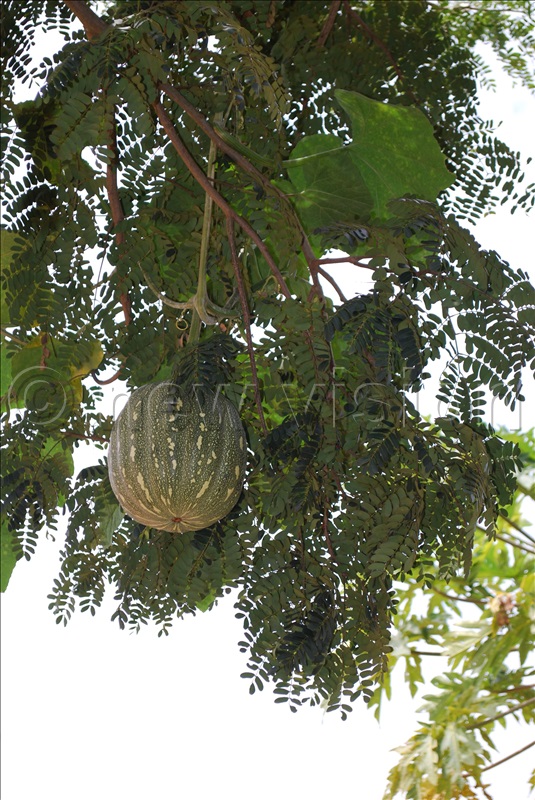By Umar Nsubuga
In the agricultural landscapes where pumpkins have thrived for generations, farmers have long battled against the challenge of disease affecting their crops.
One innovative solution has been gaining attention in the farming community, growing pumpkins on trees.
This unconventional method is not only reducing the risk of disease, but is also transforming pumpkin farming practices, leading to healthier yields and a more sustainable approach to cultivation.
Joseph Bukenya, a farmer in Kabwomero Luwero district says pumpkins are grown directly on the ground, where they can be vulnerable to soil-borne diseases such as root rot, mildew, and pests.

He says the moist environment at ground level often promotes the growth of fungi and bacteria that can spread quickly through pumpkin vines, threatening the health of entire crops.
Henry Sekyewa, an agronomist says farmers are now experimenting with elevating their pumpkins off the ground by utilising trees as natural trellises, offering a surprising and effective way to shield their plants from disease.
He says this practice starts with selecting the right type of tree. Trees with sturdy branches and good canopy spacing, such as fruit trees, are ideal for pumpkin farming.
He also says that farmers can plant pumpkin seeds near the base of these trees, and as the vines grow, they are gently trained to climb up the trunk and along the branches.
“The elevation keeps the pumpkin fruits away from the damp soil, significantly reducing exposure to fungi and pests that thrive at ground level”, Sekyewa says.
One farmer, Bukenya, a passionate advocate for modern agricultural methods, has adopted this practice on his farm.
“When I first heard about growing pumpkins on trees, I was skeptical,” Bukenya admits.
“But after seeing how much healthier my pumpkins became, I was convinced. It protects the fruits from disease, especially during the rainy season, when moisture in the soil can cause rotting.”
By lifting pumpkins off the ground, sunlight and air circulation around the fruits improve, reducing humidity and preventing mold and mildew from forming. This method also allows for easier monitoring of the crop, making it simpler to spot any early signs of disease or pest infestation.
Another benefit is that by growing pumpkins on trees, farmers can optimize the use of space, especially in areas where land is limited, doubling up on crop production by combining tree crops with pumpkins.
“I have decreased in the use of chemicals, as the trees naturally help prevent the spread of disease. It’s better for the environment and for my pockets,” he adds, smiling.
Though unconventional, growing pumpkins on trees is proving to be an innovative step forward in sustainable farming.
As more farmers like Bukenya embrace this technique, it’s clear that nature itself can provide unexpected solutions to some of the most persistent agricultural problems.
By elevating pumpkins quite literally farmers are not only preventing diseases but also creating a healthier future for their crops and communities.





